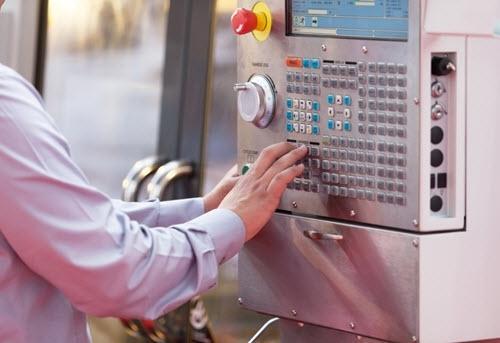How are PLCs used in Robotics, Automation & Electromechanical fields?
The emergence of the Programmable Logic Controller (PLC) heralded a new age of manufacturing. Processes on the factory floor became more automated, more precise, and less costly, which in turn meant a greater quantity of better produced goods for the end consumer at a cheaper price. The evolution of the PLC does not end there; modern advancements in technology have changed the way in which PLCs are used in some of the most cutting-edge industries.

Robotics
Traditional robotic applications have relied upon a connection between a device and an external PLC located elsewhere in the facility. These days, an ever increasing number of modern industrial innovations like those produced by tech leaders like Motoman Robotics, KUKA, and FANUC, offer robots built to include robust PLC software in the robot controller. What this means for the industry is that this software allows a small group of robots to function independently from a centralized PLC. This translates to some pretty significant cost savings to smaller operations who would otherwise be required to invest in a more traditional PLC integration.
Many of these independently driven robots include a single-station touchscreen solution that allows operators to quickly and easily modify the PLC functions of the associated industrial robot, meaning that a separate dedicated PLC does not need to be purchased. To be fair, not all processes that rely on industrial robots would benefit from this configuration. For complex processes, like those used in the manufacturing of automobiles, investing in a dedicated PLC is still a wise choice.
Automation
In the automation sector, PLCs provide continuous monitoring and processing of information received from input devices/sensors. The PLC then triggers an action for the associated output device in order to complete the desired task. Though the usage of these ruggedized computers is clear, the implications of their use isn’t necessarily as cut and dry. The use of PLCs in industrial automation has become a standard operation in order to increase the reliability of the machinery, improved system stability, and maintain a consistently high level of performance. As a consequence, this has meant that fewer human operators are required on the factory floor as well as a commensurate drop in the frequency of human error.
Electromechanics
When it comes to electromechanical operations, the purpose of installing a PLC was to effectively replace any and all electromechanical relays with a solid-state digital computer loaded with a program. This program was capable of emulating the connection of many relays in order to perform a given logical operation. To make PLCs relatively easy to program, the programming language used was purposely designed to resemble ladder logic diagrams, something that industrial electricians and electrical engineers were already well versed in. Like electromechanical relays, the PLC input and output signals are typically 120 volts AC.
PLCs also allow the behaviour of a control system to be altered as required. The PLC itself is a programmable device, a system can be effectively changed simply by changing the commands that are given to it, without having to change the configuration of all of the associated electrical components. As the PLC is essentially an industrial computer, it can perform timing functions and other advanced functions to a greater degree of accuracy and efficiency than was ever possible with electromechanical relays. Finally, PLCs have remote monitoring and control capabilities (via network connection) that simply do not exist with traditional relays. It can also communicate with other networked computers making it a much more complete and viable alternative to electromechanical relays.
PLCs represent a truly transformative technology that continues to benefit manufacturing, automation, and robotic processes to this day. It will be interesting to witness how the PLC and PLC trained technicians will continue to play a role in these fields.
Comments
For assistance, please…
Submitted by iris on Mon, 06/26/2023 - 08:55
For assistance, please contact a Program Consultant toll-free at 1-888-553-5333.

Hello , lam an electrical control engineer expert 30 years l dream about designing rebot , begin with sample one like line follower robot or walls avoiding one and at the end which my target an industrial rooot so I want to know the suitable for starting can you help me .